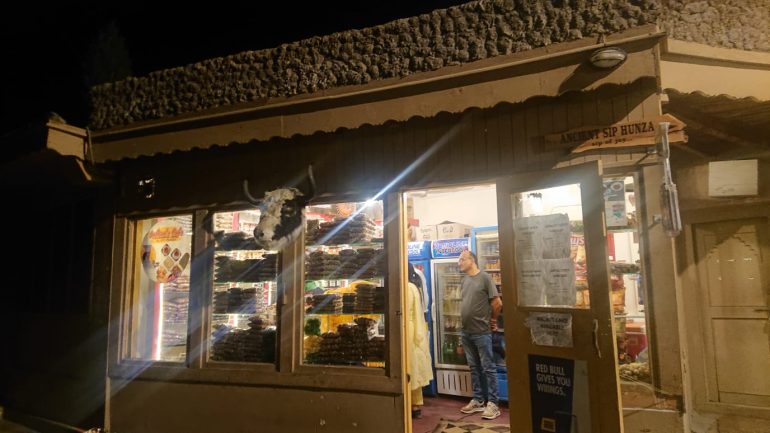The Altit Fort, a relic of a bygone period, is found in the heart of the stunning landscapes of Gilgit Baltistan. Its regal chambers, gardens, and mysterious dungeons call to adventurers and historical enthusiasts alike with their eight hundred years of history.
This piece invites you to embark on a time-traveling adventure as we reveal the mysteries and tales of Altit Fort, an incredible work of architecture that has witnessed centuries of dynasty power and strategic significance.

The journey begins when you enter the fort, which leads to the magnificent royal gardens. A calm haven, an apricot orchard covers an undulating plain of green grass fields. A path covered with sawdust leads guests smoothly through the bright gardens to the center of the fort. This majestic foyer is a precursor to the splendor that lies within.
With a history spanning 800 years, Altit Fort proudly claims to be the most ancient surviving fortress in Gilgit Baltistan. It served as the royal residence for the Mirs of Hunza for centuries, preserving its tradition as a center of power and culture. In addition to being the Mirs’ home, it acted as a fortress against invaders.
Altit Fort is exciting because it sits on a vantage point above the ancient Silk Route and the mighty river at the confluence of the Hunza and Nagar valleys, providing magnificent views of the surrounding valleys and the spectacular peaks of the Karakoram Range, particularly the massive Rakaposhi.

Altit Fort has played an essential role in the governance and defense of the Hunza Valley for ages. Conflicts, alliances, and cultural exchanges at the fort and adjacent have all left their imprint on the building and its surroundings.
A simple yet sturdy structure, the Altit Fort’s architecture is a work of simplicity and tenacity that celebrates the period’s native craftsmanship and construction methods. Its foundation is a large rock from which various building levels and a single high tower gracefully rise.

The fort, an excellent example of Balti architecture, is constructed from local wood and stone. It’s fine woodwork, which includes exquisitely carved doors and windows, displays the craftsmanship of the craftspeople who built it. A dark passage and a winding staircase lead to the upper storeys as you enter a side entrance, immersing you further into the fort’s incredible past.
The main hall of Altit Fort served as a multipurpose area, holding social gatherings, religious ceremonies, and even cooking. The most interesting historical artifact is a centuries-old huge cooking pot composed of a heat-absorbing substance that kept food warm for a long time.

You’ll also find a Shiv-Lingam, a Kashmiri samovar, and a wonderfully carved antique wooden chest used for storing flour in this room, stressing the importance of wheat in ancient times. The trunk is covered with thousands of swastikas, a symbol reflecting the four essential components of nature, revealing the cultural profundity of the mountain tribes from centuries ago.

When you progress deeper into the fort, your guide unveils the terrible mysteries beneath your feet. Small floor lids opened onto dungeons below. These dark and gloomy dungeons whisper tales of a time long gone as a harsh reminder of the fort’s complicated history.

As you ascend, you’ll explore the royal chambers, which provide stunning views. Hanging galleries extend from these chambers, providing breathtaking views. View the captivating Nagar Valley, with a meandering blue river running through it and a curved black line of the Karakorum highway running alongside it, to create a sight that will stay with you forever.

Altit Fort is more than a museum piece; it is also a bustling commercial center steeped in history. Visitors can enjoy the vivid culture and traditions of the local people at the bustling market located on the grounds of the fort. You may find a wide range of goods here, from handcrafted items to traditional attire and souvenirs.
Local artisans and craftspeople congregate at the market to display their skills. There are numerous things to choose from, including jewelry, pottery, and rugs with intricate designs. Visitors can observe the artistry firsthand and even purchase exclusive, handcrafted products as souvenirs of their stay.

The market additionally offers a delicious food experience. Momo (dumplings), chapshuro (pastry stuffed with meat), and other delicacies made with apricots are common traditional Balti and Hunza foods. These flavorful dishes give a glimpse of the region’s rich culinary heritage.
The market periodically hosts traditional dance and music performances to immerse tourists in the local culture. These festivities provide an enthralling look into the Hunza Valley’s colorful traditions and customs.

Altit Fort has recently undergone extensive preservation and restoration. These initiatives seek to preserve the fort’s historical importance and ensure that future generations can continue enjoying its beauty and cultural significance.
Also Read: Upgrading technical ties between China and Uzbekistan

A living tribute to the fortitude, culture, and strategic importance of the Gilgit Baltistan region, Altit Fort is more than just a historical remnant. The fort’s continued prominence at a historical crossroads attests to its importance, making it a must-see site for those interested in immersing themselves in the past’s complex fabric. Exploring Altit Fort is like being whisked away to a different universe, where history, mystery, and breathtaking beauty collide and impact your soul. You are invited to take part in the illustrious history of this majestic stronghold by the echoes of centuries past that reverberate in every room and corridor.
International Relations Scholar interested in National Security strategies, with a good focus on Geo-Politics, Foreign Policy, and Public & Cultural Diplomacy.







